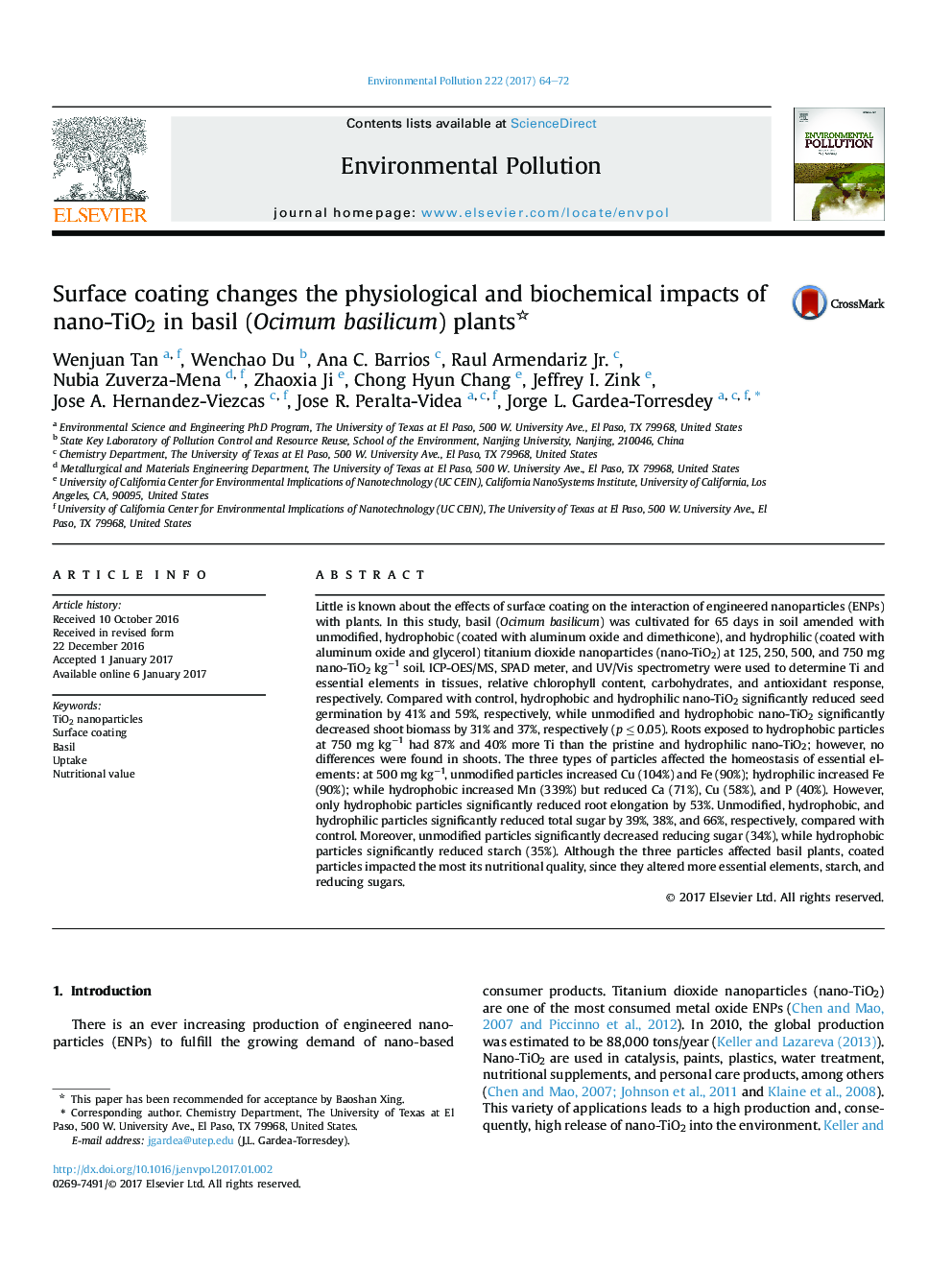| کد مقاله | کد نشریه | سال انتشار | مقاله انگلیسی | نسخه تمام متن |
|---|---|---|---|---|
| 5748995 | 1619151 | 2017 | 9 صفحه PDF | دانلود رایگان |

- Roots exposed to 750 mg kgâ1 hydrophobic nano-TiO2 had significantly more Ti.
- Hydrophobic particles reduced germination, biomass, and root length.
- The three nano-TiO2 interfered with ionome homeostasis.
- At 750 mg kgâ1 the three nano-TiO2 significantly reduced total sugar.
- Only hydrophobic nano-TiO2 reduced starch content.
Little is known about the effects of surface coating on the interaction of engineered nanoparticles (ENPs) with plants. In this study, basil (Ocimum basilicum) was cultivated for 65 days in soil amended with unmodified, hydrophobic (coated with aluminum oxide and dimethicone), and hydrophilic (coated with aluminum oxide and glycerol) titanium dioxide nanoparticles (nano-TiO2) at 125, 250, 500, and 750 mg nano-TiO2 kgâ1 soil. ICP-OES/MS, SPAD meter, and UV/Vis spectrometry were used to determine Ti and essential elements in tissues, relative chlorophyll content, carbohydrates, and antioxidant response, respectively. Compared with control, hydrophobic and hydrophilic nano-TiO2 significantly reduced seed germination by 41% and 59%, respectively, while unmodified and hydrophobic nano-TiO2 significantly decreased shoot biomass by 31% and 37%, respectively (p â¤Â 0.05). Roots exposed to hydrophobic particles at 750 mg kgâ1 had 87% and 40% more Ti than the pristine and hydrophilic nano-TiO2; however, no differences were found in shoots. The three types of particles affected the homeostasis of essential elements: at 500 mg kgâ1, unmodified particles increased Cu (104%) and Fe (90%); hydrophilic increased Fe (90%); while hydrophobic increased Mn (339%) but reduced Ca (71%), Cu (58%), and P (40%). However, only hydrophobic particles significantly reduced root elongation by 53%. Unmodified, hydrophobic, and hydrophilic particles significantly reduced total sugar by 39%, 38%, and 66%, respectively, compared with control. Moreover, unmodified particles significantly decreased reducing sugar (34%), while hydrophobic particles significantly reduced starch (35%). Although the three particles affected basil plants, coated particles impacted the most its nutritional quality, since they altered more essential elements, starch, and reducing sugars.
271
Journal: Environmental Pollution - Volume 222, March 2017, Pages 64-72